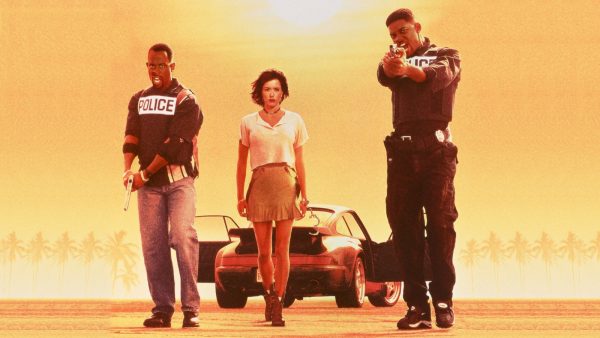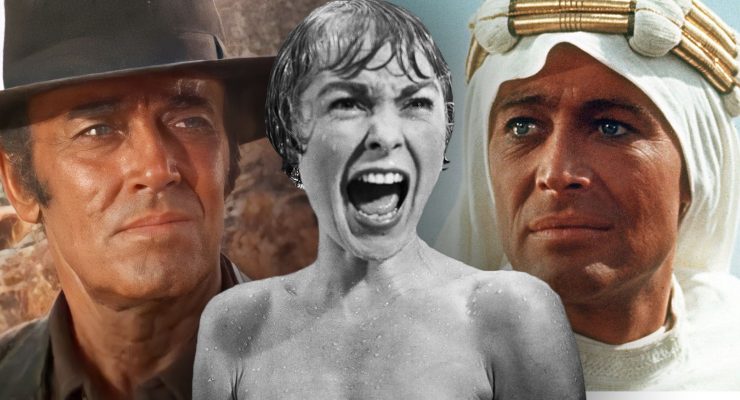Tom Jolliffe on Michael Bay’s unique approach to cinematic destruction…
In the mid-1990s a young upstart director burst out of the music video scene and blazed into the action genre with the kind of blustering gusto very few helmers have managed before or since.
When I was growing up as a young teen, the cinema of Michael Bay dazzled in a way that felt specifically targeted to the sensibilities of people my age. These films were inherently similar to the films I’d grown up watching during the peak era of Sylvester Stallone and Arnold Schwarzenegger, but somehow evolved to the style of the 90s. For one, the leading stars were a little different, totally unexpected. A couple of decades prior to Slapgate, Will Smith had been known as an affable TV star in the hit show The Fresh Prince of Bel Air. Under Bay’s watchful eye, and teamed with comedian and fellow TV star Martin Lawrence, Smith would throw his hat into blockbuster cinema with Bad Boys.
Bad Boys, loaded with snapping and bickering dialogue between its two leads, was glossy, histrionic, wildly illogical and gleefully excessive. From a film that was endlessly quotable to being memorably violent, Bad Boys perfectly adhered to the day dreaming ideas of what an action film should be (to 15 year olds at least). It was glorious, and coming toward a tail end of the genre being driven by practical effects and some sense of grounding. Bay of course had little regard for subtlety and realism. He still doesn’t, but at least prior to turning Transformers from cartoon to live action smash-em-up (on crack), Bay’s films were about humans thrown into insurmountable battles, usually high on sarcastically tinged dialogue and banter.
After turning Smith into an action hero, Bay then did the same for Nicolas Cage in The Rock. On release, neither film was particularly greeted with critical adoration. The same complaints critics level at Bay in recent years, have always existed since Bad Boys. They have perhaps been exacerbated due to the films being even more indulgent and succumbing to more Bay-isms/indulgences. Still, in retrospect, those first two films have aged well in some regards (maybe not quite so in some of the dialogue and stereotyping in Bad Boys). The Rock in particular, which proved a surprisingly perfect vehicle for Nic Cage, benefitted from a stellar supporting cast. Sean Connery was as effortlessly badass as anyone could possibly be. He’s the perfect gruff straight man to the very Cage, Nic Cage. Then among the fine roster of character actors like William Forsythe, Tony Todd, David Morse, Stuart Wilson, and Michael Biehn, you have Ed Harris adding gravitas and humility up the wazoo as the film’s antagonist.
The Rock in actuality, is one of the best action films of the past 30 years. A big part of that is the sincerity with which Harris and Connery imbue their roles, but additionally in the verve with which Bay explodes every set piece onto screen. Many of the increasingly escalating set pieces have a certain wit. They’re skits that often culminate in wild moments, such as the tail end of a Ferrari and Hummer car chase that leads to the explosive destruction of a tram (after the chase blunders its way through buildings, a group of wheelchair basket ballers and the requisite pensioner crossing the street). Bay’s gift for constructing set pieces quite obviously outweighs his hammer handed approach (for better and worse) to his dramatic scenes.
SEE ALSO: Michael Bay’s Crowning Glory: The Rock
Bay has never quite found the perfect formula for his style since. We’ve had a destructive and wild Bad Boys II, that felt unnecessarily nasty in places, the maligned Transformers series, and some more forgettable outings like 13 Hours and Pain and Gain which were a calculated shift away from the big blockbuster arena. Additionally, his early era included the iconic disaster film Armageddon which had all the subtlety of a jackhammer to the sack and Bay’s jingoistic cinematic approach to screen combat and military, didn’t have the required subtlety required when dealing with true life war stories. Pearl Harbor was slaughtered like few others in his career as such, even if the technical accomplishments and set pieces were typically impressive.
Bay’s latest, Ambulance, takes a more confined action scenario and the set up lends itself to the kind of perpetual motion that works best for Bayhem. Additionally, the casting of Jake Gyllenhaal and Yahya Abdul-Mateen II provides the kind of charisma and depth that can pull emotional engagement out of even the most dramatically lithe ideas. However the simplicity of the concept seems to have helped Bay provide an effective and enthralling action film going by reviews that are thus far, a career high. Whether this proves as good as The Rock, is another matter, but the film feels like a perfect storm of idea, cast and Bayhem. Bay himself has bemoaned one aspect of the film though – its CGI. One would assume given it’s Bay helming that CGI will be at a minimum, but he’s made no secret of his displeasure, stating that “some of the CGI is shit in this film”.

This is part of why Bay has remained relevant and why he’s still able to command hefty budgets. Like few other exponents of the genre, Bay’s predilection for practical effects work is increasingly rare and commendable. I recall seeing some behind the scenes work on one of the Transformers films. A sequence involving a flaming asteroid careering to the Earth. One might assume that this would be made entirely by CGI and 99% of modern blockbuster directors, would probably leave it to CGI artists, but not Bay. A spinning, flaming asteroid is fired along a lengthy zip cable from sky to ground. An impressive technical achievement, and of course some CGI help would have been used to embellish some elements and remove wires etc. Still, it’s Bay’s raison d’etre. He began making action films at a time where you largely had to do everything practically and his approach hasn’t changed. Of course a 50 foot Transformer is an exception but still placed within live practical work. Increasingly, modern action blockbusters are starting to look fake. That awkward compositing of live action and CGI rarely looks seamless. MCU continue to pump out behind the scene featurettes which appear to take place largely in green screen studios.
SEE ALSO: Read our review of Ambulance here
Like those other rare contemporaries who create as much in camera as possible, Christoper Nolan, Denis Villeneuve and Quentin Tarantino, Bay wants a particular authenticity to action. It’s an approach which is dying off, and perhaps these few last bastions will ride off into the sunset whilst CGI driven action takes over completely. What Bay also provides, in antithesis to Nolan etc, is the low brow approach. Nolan films require a level of focus and intellectual engagement to fully get into. You’ve got to ready yourself and get focused before approaching. However, Bay offers the pick up and play approach. As long as the films steer away from some of the more obnoxious elements in a few of his works, then it’s quite easy to slip in and out of a Bay picture, to enjoy without needing to actively engage with it. There’s something to be said for a switch your brain off at the door film. For some enjoyable B movie extravagance. Hopefully, going forward, Bay can continue what has been something of an upward curve of late, and find projects which perfectly gel with his style and sensibilities. It’s Big Mac cinema, and sometimes don’t you just want a Big Mac? He hasn’t matured as a film-maker, but then again…why should he?
Tom Jolliffe is an award winning screenwriter and passionate cinephile. He has a number of films out on DVD/VOD around the world and several releases due out in 2022, including, Renegades (Lee Majors, Danny Trejo, Michael Pare, Tiny Lister, Nick Moran, Patsy Kensit, Ian Ogilvy and Billy Murray), Crackdown, When Darkness Falls and War of The Worlds: The Attack (Vincent Regan). Find more info at the best personal site you’ll ever see here.

















